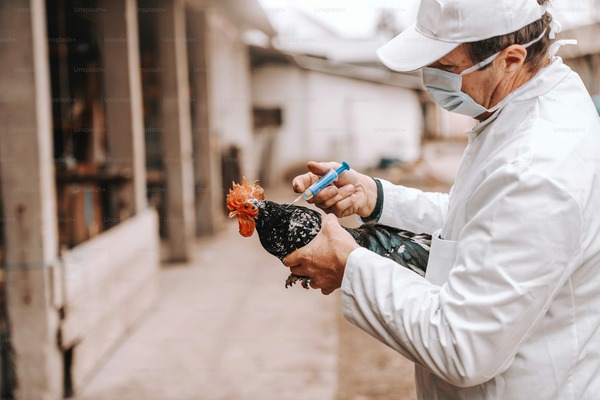Bird Flu Outbreak: Essential Insights for Farmers to Protect Their Flocks
By Deborah
There has been a recent resurgence of a dreadful disease in the United States which is avian influenza. Avian influenza which is commonly known as bird flu, has raised concerns among farmers, especially poultry farmers. The highly pathogenic strain of the avian influenza virus(HPAI) caused extremely significant disruptions in late 2024 that affected not only commercial poultry operations but also, backyard poultry operations. For farmers, it is important to understand this threat and adopt proactive and safe measures which are very critical to safeguarding their birds and their livelihoods as well.
What Is Bird Flu?
Avian influenza disease is a viral infection that affects birds primarily but can be spread to humans and other animals. The HPAI strain of the virus such as H5N1, is specifically dangerous because of its effects on birds. Effects such as causing severe illness and very high mortality rates in birds. Infected birds show symptoms like respiratory distress, decreased egg production, and rapid sudden deaths. However, in some cases, infected birds may be asymptomatic, which makes detection of the viral disease challenging.
The Impact of the Recent Outbreak
The outbreak in the U.S. occured late last year and it was one of the most widespread in recent years. Millions of birds had to be culled due to this outbreak to prevent the disease from spreading, according to the U.S. Department of Agriculture (USDA). This has led to massive economic loss for farmers and also a spike in egg and poultry product prices. Not only were commercial poultry farms affected, backyard poultry farmers were affected, with many farmers losing their entire birds.
The outbreak showed the vulnerabilities in poultry farming, and it also highlighted the importance of strict biosecurity measures to prevent the disease from spreading from farm to farm.
Transmission of Bird Flu
Bird flu gets transmitted directly primarily through contact with infected birds, their droppings, or secretions. Some wild birds, especially waterfowl, are natural carriers of the virus and play a significant role in its transmission.
In addition to direct transmission, the virus can spread through contaminated equipments, feed, clothings, and vehicles. Human activity often unintentionally contributes to the spread, making strict hygiene practices essential.
Key Measures to Protect Your Flock
1) Ensure Strict Biosecurity Practices: this can be done by:
• Restricting general access to your farm. Allow only essential and designated personnels into the farm.
• Enforcing the use of disinfectant footbaths to limit the spread of disease and ensure that all visitors wear protective gear before entering the farm.
• All equipments and vehicles entering the premises should be cleaned and disinfected.
2) Separate Domestic and Wild Birds
• Make sure to keep all poultry birds indoors or under covered enclosure spaces to limit contact with wild birds.
• Remove anything that might attract wild birds to your farm.
3) Monitor Bird Health
Regular observation of your flock for signs of illness, such as lethargy, reduced feed intake, or respiratory distress should be carried out.
Isolation of sick birds should be done and suspected cases should be reported to appropriate veterinary authorities.
4) Control Bird Movement
The movement of birds from one location to another should be reduced to avoid the risk of cross-contamination.
Also, ensure that new birds to be introduced to your flock should be from certified and disease-free sources.
5) Stay Informed
Keep up with updates from organizations that provide timely and important information on outbreaks and best practices to avoid them.
Responding to an Avian Influenza Outbreak
If bird flu is suspected in your poultry flock, then you need to act really fast;
a) Contact and report to your veterinarian or the state animal health authority.
b) Follow proper quarantine procedures on your poultry farm to prevent the spread of the disease.
c) Dispose infected birds properly as per government guidelines to reduce environmental contamination.
The recent bird flu outbreak serves as a subtle reminder of the importance of vigilance and proper biosecurity in poultry farming. The implementation of biosecurity measures is very critical. Farmers need to stay informed to protect their flocks and reduce the impact of future outbreaks of the disease. Proactive steps ensured today can safeguard not only individual farms in the country but also the broader poultry industry.
Also Read: Antimicrobial Resistance in Livestock

Comments are closed